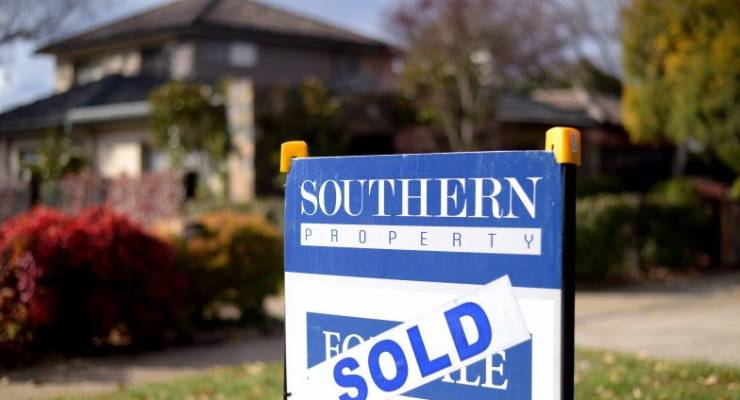
Do you want to see a graph that made my jaw hit the floor?
The Commonwealth Bank recently sent out a compendium of data on its lending activity, and it contained this startling graphic. Apparently amid the mayhem of death and economic destruction wrought by 2020, housing lending is continuing apace.
In fact, as the next graph shows, despite a dip in April and May, new lending is still almost 20% higher than last year.

“The flow of new lending is now a little above where it was pre-COVID. In annual terms lending is growing at a strong pace,” the CBA said.
The Australian housing market is astonishing. Like a cockroach, it appears capable of withstanding most anything. And goodness knows the events of 2020 have been the equivalent of a can of Mortein and a vigorous stamping.
Unemployment is at the highest level since last millennium and still rising. The economy has shrunk at a pace not seen since the 1930s. A tidal wave of business insolvencies is likely to hit in October. Airbnbs are full of dust, not tourists, and international student arrivals have stopped.
Nothing on that list looks like a good omen for housing. Also rents are falling through the floor. Over the past year, house rents are down 7.6% in Sydney, for example, and unit rents down 7.2%. Yields for property investors are looking sickly.
And yet. Australia’s love for home ownership apparently continues to burn fiercely.
As the next graph shows, house price movements remain quite negative in Victoria. But in NSW and Queensland they appear to be clawing their way back up to positive territory. The effect of the lockdowns is wearing off.

First-home buyers are a big part of the ruckus. New lending to them is up in all states except for Victoria and the ACT. Deposits are surely easier to come by now, with spending capped by sheer virtue of a lack of spending options, higher Centrelink payments, and the option to access super.
It remains possible — not certain, but possible — that despite spectacularly elevated debt levels and very high housing prices overall in Australia, we could get through the coronavirus recession without a major housing crash. This is, after all, a very weird recession we are having. One where luxury car sales go through the roof. One where people’s total earnings are up, the US sharemarket is hitting records, and cash is piling up sky high in people’s bank accounts.
Whether you seek to assign credit or blame for this miraculous stability in the housing market, you must turn to one place. The Reserve Bank of Australia. Its interest rate cuts have been the balm the housing market wanted. By slashing the official interest rate to just 0.25%, fixed mortgage rates have fallen to as low as 2.3%.
Fixed-rate loans are surging in popularity. Australian borrowers have always been heavy users of variable rate mortgages. It’s part of the reason monetary policy in this country works quite effectively, and why we pay outsized attention to the RBA.
The average person notices a change in official interest rates in their mortgage payment. Fixed-rate loans have rarely accounted for more than 20% of loans. Now they account for 40% of CBA lending.
These low rates mean borrowers can service far higher loans. And so they are borrowing more. Average loan size is also up on last year, according to CBA data.
With the RBA pledging to leave rates at low levels for years to come, you have to wonder if big new loans will be enough to compensate for the many factors that would otherwise be pushing the housing market down.








Crikey is committed to hosting lively discussions. Help us keep the conversation useful, interesting and welcoming. We aim to publish comments quickly in the interest of promoting robust conversation, but we’re a small team and we deploy filters to protect against legal risk. Occasionally your comment may be held up while we review, but we’re working as fast as we can to keep the conversation rolling.
The Crikey comment section is members-only content. Please subscribe to leave a comment.
The Crikey comment section is members-only content. Please login to leave a comment.